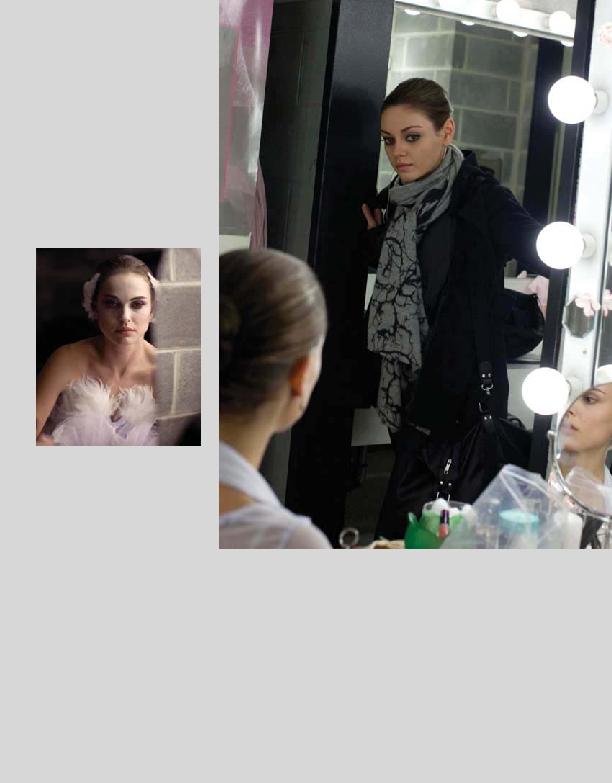
run off together, jumping into the lake and
breaking the spell at the tragic expense of
their lives.
still had to go down a lot of wrong roads be-
fore getting to the final script." Without
Heinz's murder mystery angle, Heyman had
to figure out what would serve as the plot en-
gine to drive the story forward. "It's very hard
when you're talking about training for a
role," he says. "That's not a particularly dra-
matic or universal thing for the audience."
So Heyman experimented with various ideas
that might make the story more compelling.
In one early version of his script, Nina was
dent star (a character played by Winona
Ryder in the film), until Nina did something
incredibly back-stabbing to get the role.
"That was a wrong path," Heyman says.
director-choreographer was a stand-in for her
prince (played by French actor Vincent Cas-
sel and modeled after George Balanchine,
who famously married and divorced his
muses over the years), Heyman still had to
figure out who the sources of conflict would
be. "The unifying arc was going to be how
someone who's a White Swan transforms
into a Black Swan, personality-wise, charac-
ter-wise -- what that means, in terms of
being darker, seductive, free, as opposed to
rigid and controlled," Heyman explains.
the supernatural, scary aspect," says Hey-
man, who came up with the idea that Lily
would be a different dancer (played by Mila
ties that Nina needed in order to properly
play both roles in the ballet. "That's where
the tension started to come from, so that was
one of the elements we settled on early," he
says. But something was still missing.
mother (Barbara Hershey). "If this is about a
White Swan who becomes a Black Swan, the
mother becomes the real thing standing in
the way," he says. "Nina really needed to es-
cape her mother to achieve what she
wanted, and that relationship is what helped
pull us through and gave us the real-world
the mode of Polanski's Repulsion, which
had appealed to both Heinz and Aronofsky
from the start -- the character is effectively
her own antagonist as well. "We worked
very hard to make sure that all of the sur-
rounding characters of the film were actu-
ally real antagonists, too," Heyman says.
"It's hard to pull off something where it re-
ally is just all in her head. It's hard to sym-
pathize with a character like that." So it
became a challenge to figure out how
everyone could be seen as either a positive